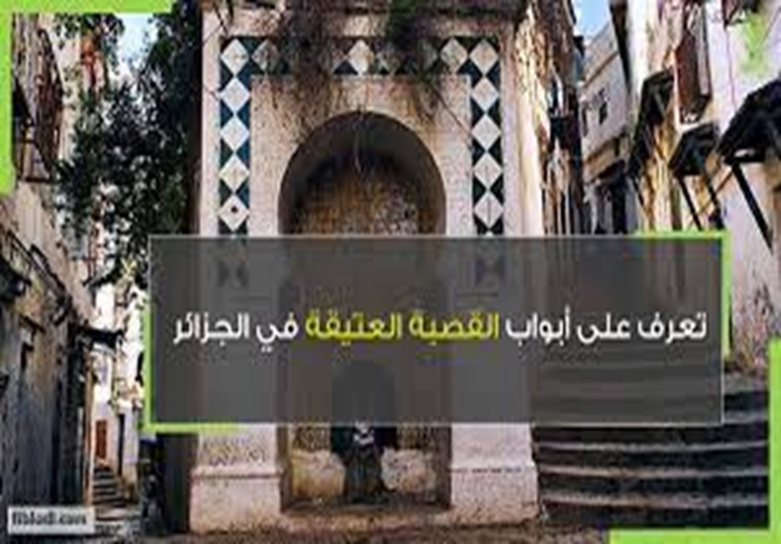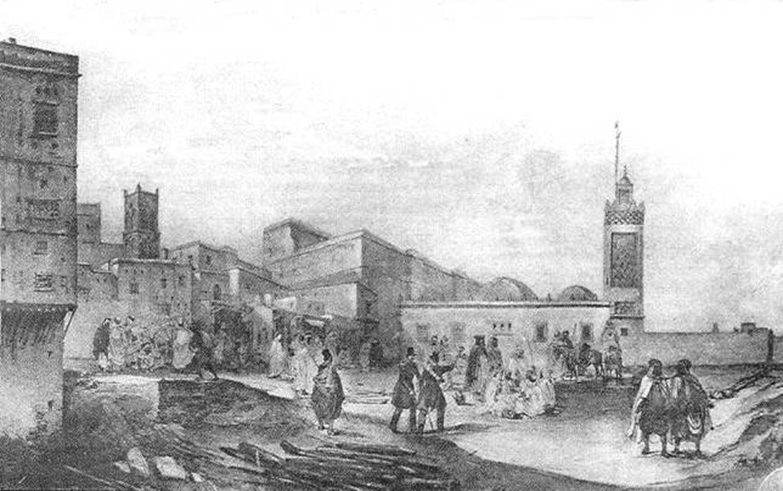Algiers has 7 ancient doors. Get to know them

“Icosium” is the old name of the Algerian capital, which means “Seagull Island”. It was given by the Romans during their occupation of Algeria, and it was given a succession of names, especially after it became the headquarters of a Amazigh tribe called “Beni Mezghna”. In the tenth century AD, it was founded by “Balkin bin Ziri bin Manad Al-Sanhaji”. A city nicknamed “Algeria Beni Mezghna”, but to this day it still retains the last name and its five gates that occupy an area in historical neighborhoods. The Kasbah, in its original meaning, is the center of the ancient, fortified city surrounded by walls. Visitors enter it through well-known doors, similar to the “Kasbahs” known in Algeria, such as the Kasbah of Bejaia, the Kasbah of Constantine, and others, or the Kasbahs known in other Arab countries such as Tunisia and Syria. Among the most famous doors of the Kasbah in Algeria are: Bab El Oued, Bab El Jadid, Bab Azoun, and others, which now bear the names of well-known popular neighborhoods in Algeria. All of these doors were large, well-made, studded with iron, and were closed shortly before sunset and opened shortly after sunrise. There are many guards in it, and the guarding is intense so that no suspicious person sneaks into the city, and it is surrounded by castles and barracks. Inside these doors there were other secondary doors, such as the two inner doors in the upper kasbah and the inner door behind the Jazira or Dzira gate.

Historians' opinions differed about the correct number of these doors, especially since most of them were demolished. After the colonizer entered, who exploited the areas of some of them in his cultural expansion, we find that others were subject to the barrier of time that hid their stories from successive generations. Among the most prominent people who said their number, we find two fixed numbers with no third. There are some He says only five doors, while others say seven.

According to Mr. Karim Akak, known in the cultural and heritage community as Sheikh Al-Mahrousa and a personality specialized in studying the capital’s heritage, he says that the number of chapters is seven, not five, and they are as follows:
Bab al-Wadi.
Bab Al-Dzira.
Bab Al Bahr.
Bab Azoun.
Bab DJdid (New door).
Bab Sidi Ramadan.
Bab Sbouwa(Door of Lions)

1- Bab al-Wad
The name Bab al-Wad came from the valley located near the city, where the mouth of the valley was in the sea, but in our day a road and a large square were built that covered the valley, which has no trace today, but the door still exists.
Bab al-Wad, nicknamed the Gate of Death because of its view over the cemeteries. From this access, the small inner doors (nameless) have a specific purpose, especially those serving as a passage for the soldiers living and guarding the city. Also, it is not enough to close the security doors.
The northern side of Bab El Oued was a marina that witnessed a large demand from merchants, fishermen, and ships carrying goods.

2- Bab Azoun
, which was also named after one of the revolutionaries from the people of the Kasbah region who revolted against the Ottoman ruler and besieged the city with his army, but was killed by the Turks in front of a place that today is called the same name. Bab Azoun is open in a long street opposite Bab Street
. Wad, which is related to any external activity: agriculture, travel, traffic within the country, but also the arrival of goods. To the east.

3- Bab Al Jazeera (Dzira)
In the northern areas of the old city of Algiers, a huge iron gate was built, called (Bab al-Jazira). It is a door that facilitates the entry of sailors from across the sea because it is the largest and was designated for them in the 18th century. Military barracks for the Janissary armies, the strongest divisions of the Ottoman army, were also located next to it.

Bab Al Bahr-4
A door was also allocated for fishermen in the marina of the Algerian capital, called (Bab al-Bahr) and also called (Bab al-Diwaneh). It was designated for maritime trade, and five bells were hung in it, which the fishermen used to ring to indicate the abundance of marine products, including fish and sardines. Five bells were hung in this door, and it was said that they were brought with them . From the city of Oran in the year 1708 AD and hung on the door of the customs in commemoration of the victory over the Spaniards and the recovery of the city of Oran.

5- Bab al-Jadid
Bab al-Jadid (the new gate), where the so-called citadel (or according to the popular name, Dar al-Sultan) is still located. But the passage, like a small tunnel, remains clearly visible as part of the Kasbah's preservation heritage

6- Chapter of Sidi Ramadan:
It is the oldest door. The name of this religious edifice, Sidi Ramadan, goes back to the name of one of the soldiers of the Islamic army who came to North Africa as part of the campaign of Islamic conquests led by the Islamic conqueror Uqba ibn Nafi. This soldier later settled in Algiers, and after his death he was buried in one of the corners of this mosque. Hence, this religious edifice took its current name.
Another story about the origin of “Sidi Ramadan” is that he is a righteous guardian whose origins go back to one of the thrones of the city of Ziban in Biskra.

7- Chapter on the Sabooa:
Or (Bab Al-Aswad) is a separate door located inside the islands in the middle of the sea. There are no official sources about why it was given this name, so it remains unknown.

These doors were large, made of wood, and decorated with beautiful decorations. They opened when the sun rose and closed when the sun set.
What is also interesting to note is that the ancient gates of Algeria still exist, whether in huge gates or in places bearing the names of those doors that have passed for hundreds of years, but have not been erased from the memory of the residents of the Algerian capital, which they inherited from father to grandfather, and continue to preserve the history of the ancient city.
Sources : Babzman+ Wikipedia, the free encyclopedia

